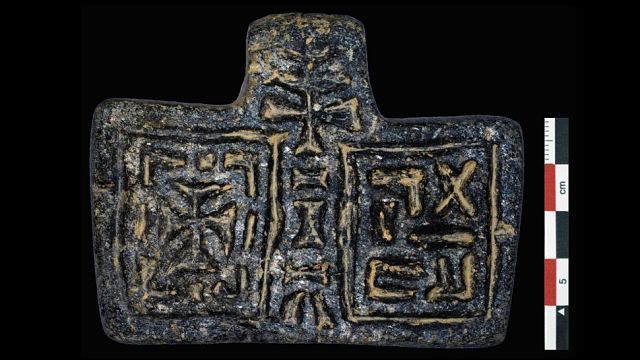Archaeologists now can more closely date when the religion spread to the Aksumite Empire
In the dusty highlands of northern Ethiopia, a team of archaeologists recently uncovered the oldest known Christian church in sub-Saharan Africa, a find that sheds new light on one of the Old World’s most enigmatic kingdoms—and its surprisingly early conversion to Christianity.
An international assemblage of scientists discovered the church 30 miles northeast of Aksum, the capital of the Aksumite kingdom, a trading empire that emerged in the first century A.D. and would go on to dominate much of eastern Africa and western Arabia. Through radiocarbon dating artifacts uncovered at the church, the researchers concluded that the structure was built in the fourth century A.D., about the same time when Roman Emperor Constantine I legalized Christianty in 313 CE and then converted on his deathbed in 337 CE. The team detailed their findings in a paper published today in Antiquity.
The discovery of the church and its contents confirm Ethiopian tradition that Christianity arrived at an early date in an area nearly 3,000 miles from Rome. The find suggests that the new religion spread quickly through long-distance trading networks that linked the Mediterranean via the Red Sea with Africa and South Asia, shedding fresh light on a significant era about which historians know little.
“The empire of Aksum was one of the world’s most influential ancient civilizations, but it remains one of the least widely known,” says Michael Harrower of Johns Hopkins University, the archaeologist leading the team. Helina Woldekiros, an archaeologist at St. Louis’ Washington University who was part of the team, adds that Aksum served as a “nexus point” linking the Roman Empire and, later, the Byzantine Empire with distant lands to the south. That trade, by camel, donkey and boat, channeled silver, olive oil and wine from the Mediterranean to cities along the Indian Ocean, which in turn brought back exported iron, glass beads and fruits.

A stone pendant with a cross and the term “venerable” in Ethiopia’s ancient Ge’ez script found outside the eastern basilica wall. (Ioana Dumitru)